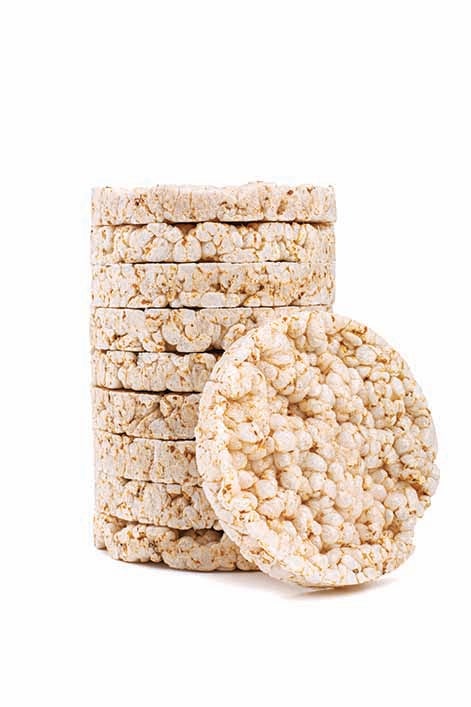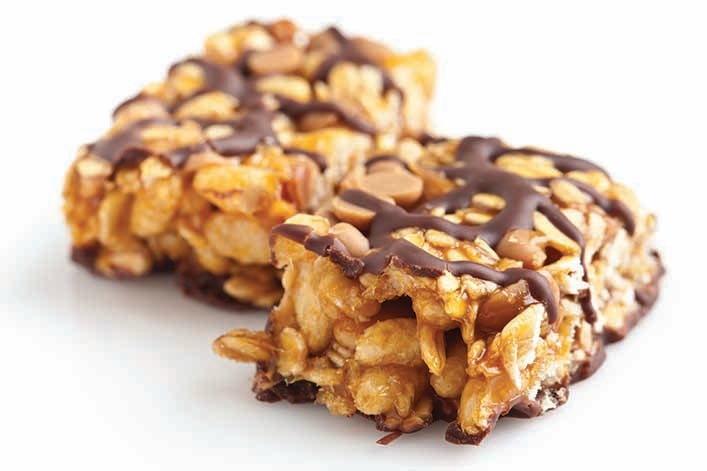What To Eat Before, During and After Climbing
You’ve been waiting all week: It’s time to spend a day at the crag. But wait, what do you eat? A huge breakfast of biscuits, sausage, and gravy? Or maybe just have cereal and pack a bunch of gels and gummy bears?
Marisa Michael, MSc, RDN, CSSD is a registered dietitian, member of the USA Climbing Medical Committee, and author of Nutrition for Climbers: Fuel for the Send. See nutritionforclimbers.com or @realnutritiondietitian
You’ve been waiting all week: It’s time to spend a day at the crag. But wait, what do you eat? A huge breakfast of biscuits, sausage, and gravy? Or maybe just have cereal and pack a bunch of gels and gummy bears?
Fueling and hydrating right will set you up for success.

The Night Before
A full day of climbing demands a nutrition plan. The night before, avoid alcohol and greasy, fibrous, or very spicy foods (unless you’re used to spices). These foods take a long time to digest and have the potential for gastrointestinal upset. They can stick around, feeling heavy when you’re trying to climb. And they might necessitate bringing extra blue bags to the crag, if you know what I mean.
Instead, aim for a balanced dinner with carbohydrates, protein, and fats that are nourishing but easier on the stomach. Fish with potatoes and a salad, spaghetti and ground beef with green beans, or a white-rice bowl with tofu cubes and bell peppers are all good options.
Before Sendage
What you eat also depends on how much time you have before exercising. Consider not only the climb, but the approach. If you have three to four hours before activity, you have time to eat a heartier breakfast, with a mix of carbs, proteins, fat, and fiber. Some options are oatmeal with nuts and berries, a veggie omelet, or avocado toast with egg.
If you go this route, you may want to top off with 100-200 calories’ worth of carbohydrates about 30 minutes before climbing, depending on how hungry or fueled you feel. Try some gummies, a bagel, a couple sheets of graham crackers, or a piece of fruit.
If you only have an hour or so before climbing but didn’t get the luxury of a full breakfast a few hours prior, eat something that is quick to digest and easy on the stomach, such as a smoothie, a peanut butter and jelly sandwich on white bread (lower fiber means it will quickly digest and be an available fuel source for your working muscles), a protein shake, or the easy carb snacks mentioned above.
At the Crag
Once you arrive and rope up, a few nutrition principles will help guide your fuel choices:
Energy: Calorie needs vary widely based on the person and the type of climbing. In general, active climbing burns about 10-11 calories per minute. More energy is needed for unfamiliar climbs, working routes at your limit, pulling overhangs, and anything else that challenges you. One hour of climbing may use around 200-300 calories. Also be sure to take your approach into account—if you’ve had a long hike before climbing, your body could need about 1500 more calories. A long multi-pitch route may also take extra. Eat at regular intervals. Aim for a snack every hour or two. Rest breaks are convenient times to fuel.

Carbs: Low-fiber carbohydrates provide quick energy. Things like pretzels, bagels, gummies, and rice cakes get into your bloodstream quickly to fuel working muscles and brain function. Have these regularly, especially when you start to feel like you’re running on fumes. Weakness, fatigue, shakiness, irritability, and nausea are all signs of low blood sugar. Eat some quick carbs and you should feel better within 20-30 minutes, but it’s better to eat before you bonk to try to prevent low blood sugar.
These quick carbs are also useful between burns. Sour Patch Kids can be the magic boost you need to send it. Aim for 15-30 grams of carbs per hour. You may need more if the conditions are extreme (hot, humid, very cold, high altitude, etc.) or if your climbing is more intense than usual. Your body’s energy systems utilize carbohydrates during higher workout intensities, so match your carb intake to the type of climbing you’re doing. Harder/longer = more carbs.
Protein: Along with carbs, layer in protein to help you feel satiated and for longer-lasting energy. Try tuna pouches, nut butters, jerky, pepperoni sticks, shelf-stable protein shakes, shelf-stable chocolate milk. Protein takes longer to digest than carbs, which means it should provide more stable and sustained blood-sugar levels. Aim for around 10 grams per hour, or base intake off your hunger and energy levels. This protein also contributes toward your overall daily intake goals.
Fluid: Hydrate regularly. It’s easy to recover from low blood sugar; it could take hours or a full day to recover from dehydration. Drink eight to 16 ounces of fluid every hour. Add in electrolytes for intense conditions or climbing. It’s tempting to drink less to avoid urinating more, but don’t fall for that trap. Staying well-hydrated keeps your mind sharp, and also preserves strength and coordination. Dehydration can lead to lethargy and a foggy mind.
After Climbing
Celebrate the day with a full meal. Unless you’re going out climbing again tomorrow, eat whatever you want. Recovery is best if you eat a mixed meal with carbs, protein and fats. If recovery is super important, avoid alcohol.
Rehydrate with electrolytes, sipping throughout the evening until bedtime. If you’re headed out the next day for more climbing, avoid those greasy, fibrous foods again.

Troubleshooting
Bloating, diarrhea, stomach cramping: Each could be caused by a lot of factors. If an effect is from gut overload from too many carbs (such as sugary sports drinks and products), back off and drink water with electrolytes. Eat savory, rather than sweet, foods, as salt helps the intestine absorb carbohydrates.
With diarrhea, try eating only bland foods such as toast, soup, pasta, and rice until symptoms resolve. Hydrate well, since fluid losses are high. Seek medical help if the diarrhea becomes severe or if you suspect food poisoning, infection, or a parasite.
Muscle fatigue: This can also have a variety of causes. If it’s nutrition-related, fuel more consistently and take longer breaks between climbs.
Muscle cramping: There are no easy answers here—cramping can be caused by electrolyte imbalance, glycogen depletion, nerve fatigue, heat/humidity, or anxiety. Your approach to alleviating cramps will depend on the root cause. Regular fueling and proper hydration can solve many cramping problems. Try deep breathing or mindful techniques to calm anxious nerves.
Feeling tired or gassed: Step up your fueling game. Eat more regularly throughout the day. Consider meeting with a dietitian to see if you are eating enough on a day-to-day basis to support the activity level you’re asking of your body.
